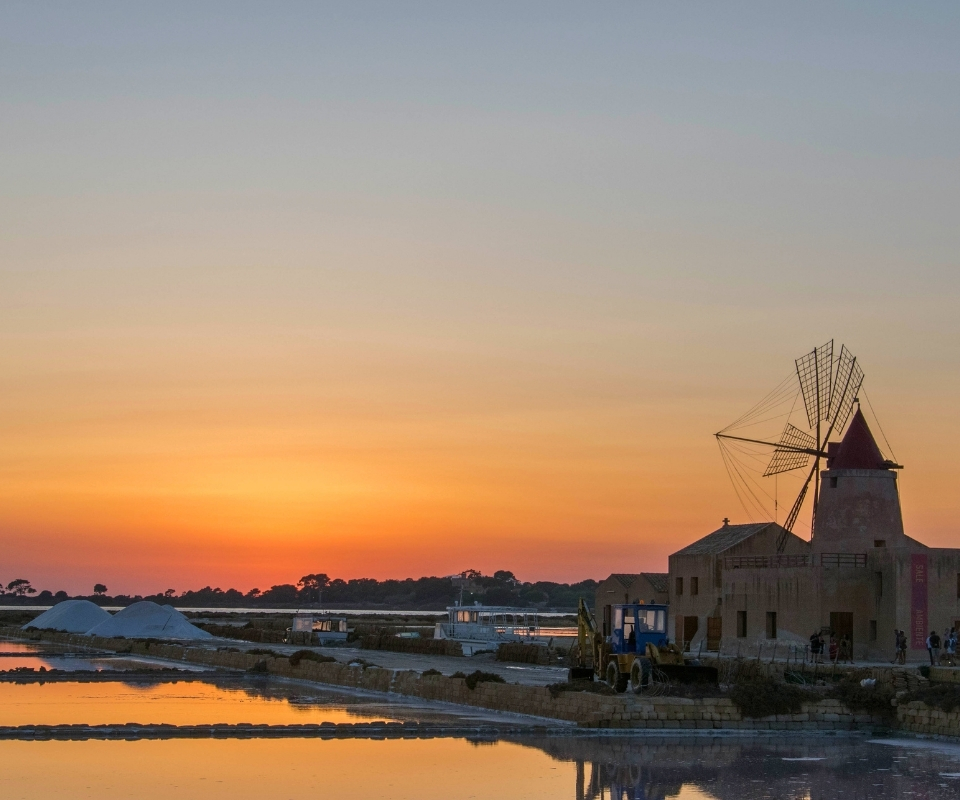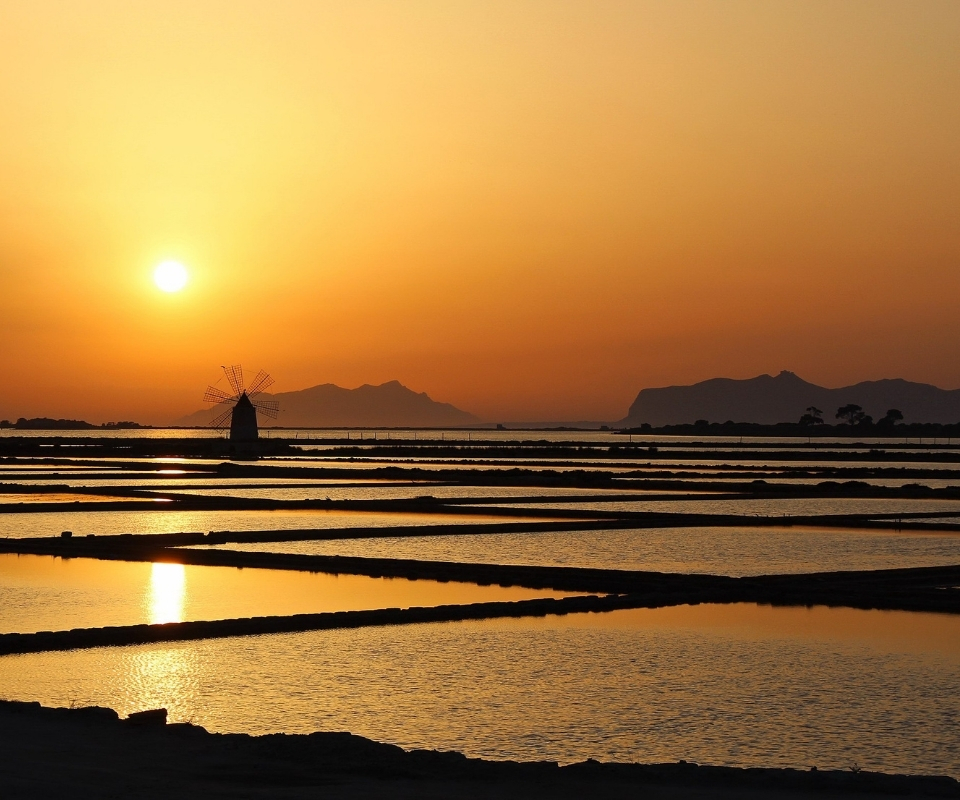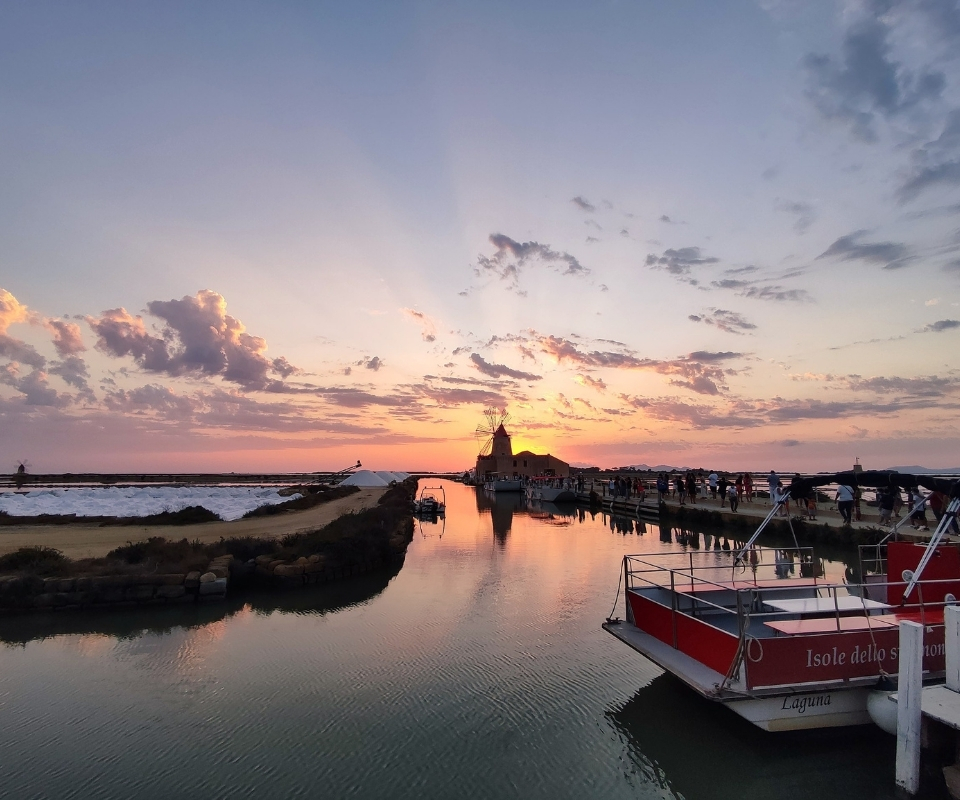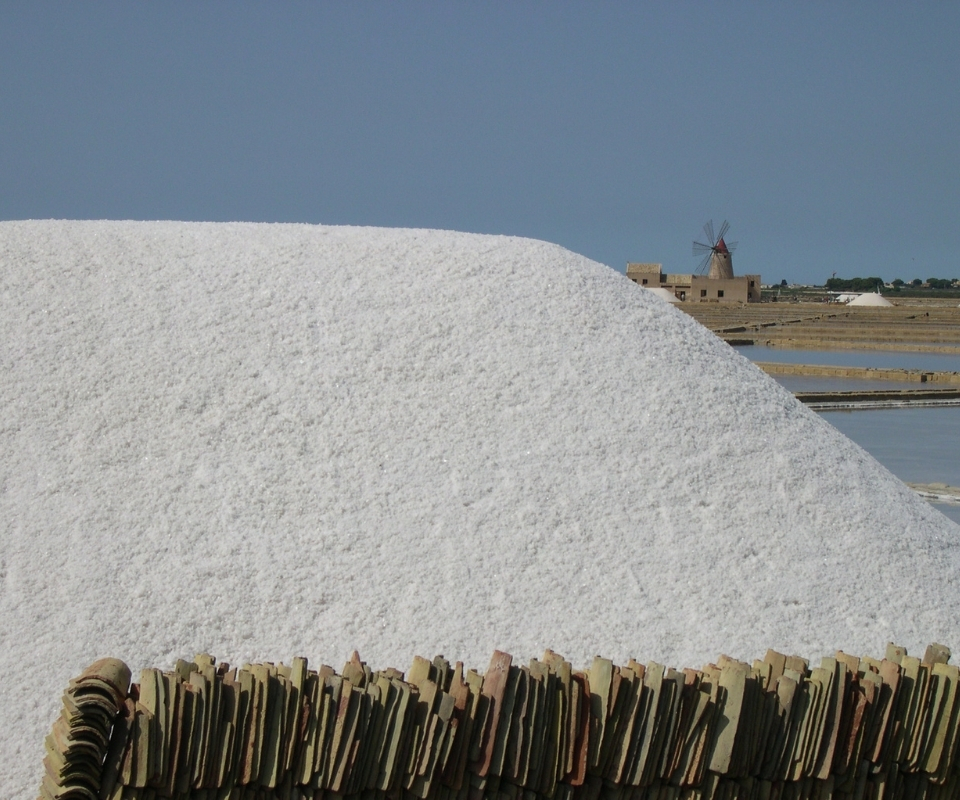North of Marsala lies a landscape of extraordinary beauty and historical-natural significance: the Saline dello Stagnone, vast salt pans dedicated to the extraction of sea salt, located along the Stagnone Lagoon, a coastal wetland of great ecological importance. The origins of these saltworks date back thousands of years: it was the Phoenicians, more than two thousand five hundred years ago, who first established the salt basins in this area, taking advantage of the exceptional natural conditions. The Stagnone Lagoon is characterized by shallow, warm waters, sheltered from the open sea by a series of islands, combined with a particularly sunny and windy climate—ideal conditions for evaporating seawater and crystallizing salt. Over the centuries, under Roman, Arab, and later medieval and modern rule, the production of what is known as white gold continued to flourish in these basins, becoming a key economic activity for Marsala and Trapani. Even today, strolling among the rectangular basins separated by narrow embankments, one can almost sense the hard work and patience of generations of salt workers who, using techniques passed down through centuries, extract salt from both land and sea. The scenic charm of the saltworks is further enhanced by the presence of ancient windmills, once used to pump water from one basin to another and to grind the salt: their restored sails punctuate the horizon, forming an iconic symbol of this unique landscape.
The Saline dello Stagnone are not just a production site but also a living ecosystem and an unmissable scenic attraction. During the salt harvesting season, between the month of July and the month of September, the spectacle is particularly striking: as the water gradually evaporates, the basins take on hues ranging from pink to deep red, due to the concentration of salts and the presence of microscopic algae, creating an extraordinary contrast against the brilliant white piles of harvested salt stacked along the banks. At sunset, the descending sun transforms the lagoon into a mirror of golden and pink reflections, offering one of the most romantic and photographed panoramas in western Sicily. It is no coincidence that the filmmaker Michelangelo Antonioni chose a sunset over the Stagnone as the final scene of a famous documentary about Sicily.
The entire Stagnone Lagoon is now a designated Regional Nature Reserve, established to protect this unique environment: its shallow waters provide refuge for numerous species of migratory birds, including herons, egrets, and the characteristic pink flamingos, often seen feeding in the salt pans. The saltworks themselves house a small salt museum, where visitors can learn about traditional harvesting methods, observe the tools used, and even purchase high-quality artisanal sea salt. From the pier at Saltu, in the Infersa area, boats depart for the island of Mozia, crossing the lagoon in just a few minutes.
Visiting the Saline dello Stagnone means immersing oneself in a place suspended between nature and culture—a landscape shaped by human hands since ancient times, yet one that has preserved its wild, untamed beauty. Here, time seems to slow, paced by the whisper of the wind turning the windmill blades and the graceful flight of birds: an experience that offers breathtaking views while also recounting an essential chapter in the productive history of Marsala and Mediterranean civilization.
360° Virtual Tour
How to get there






